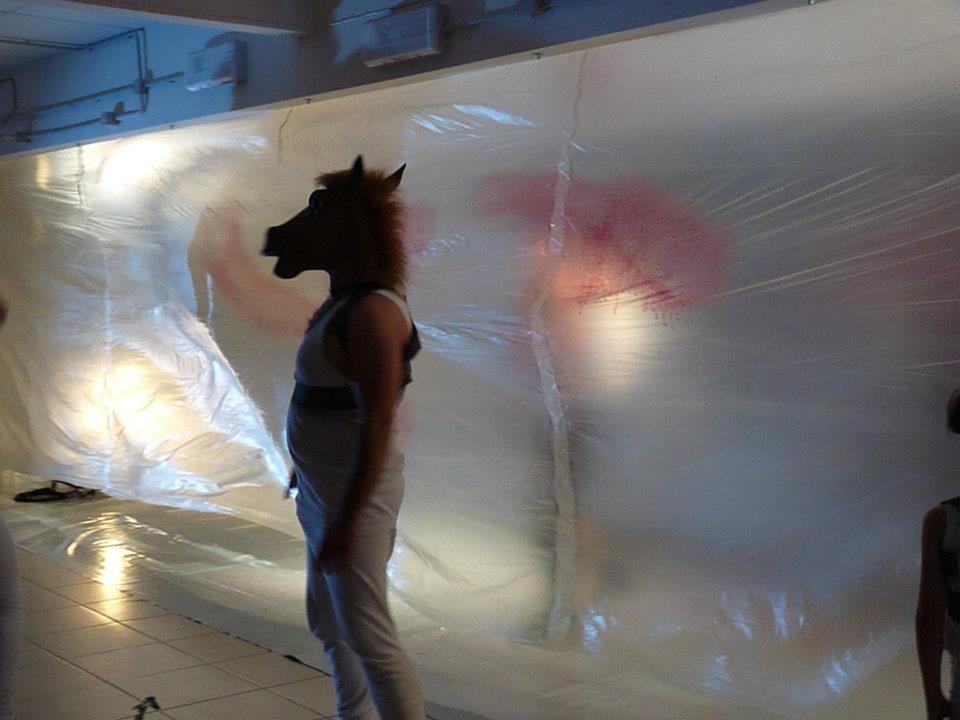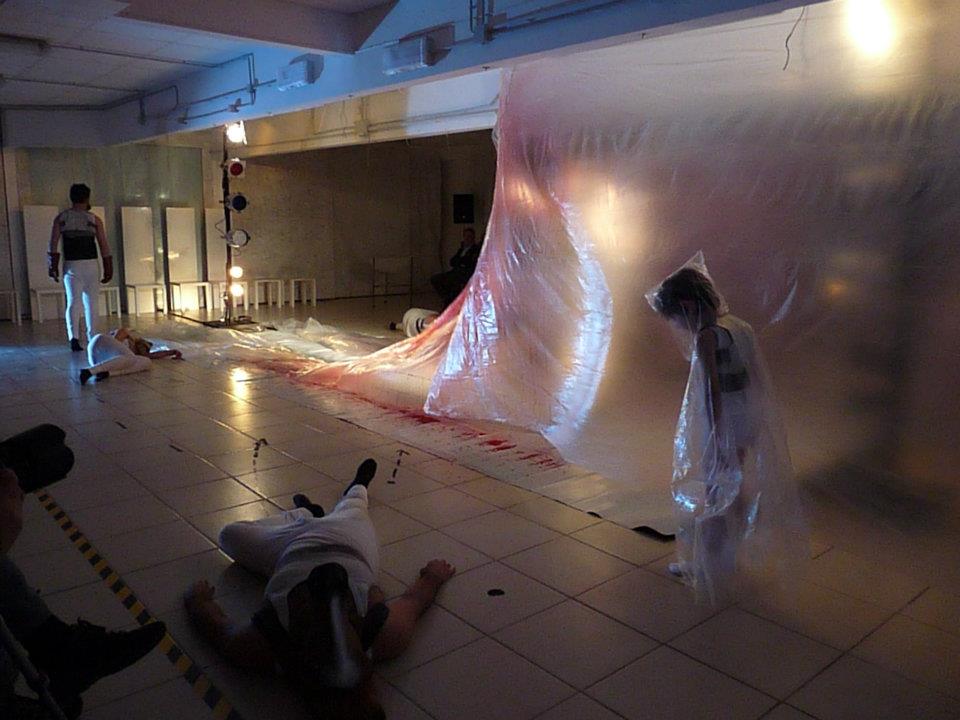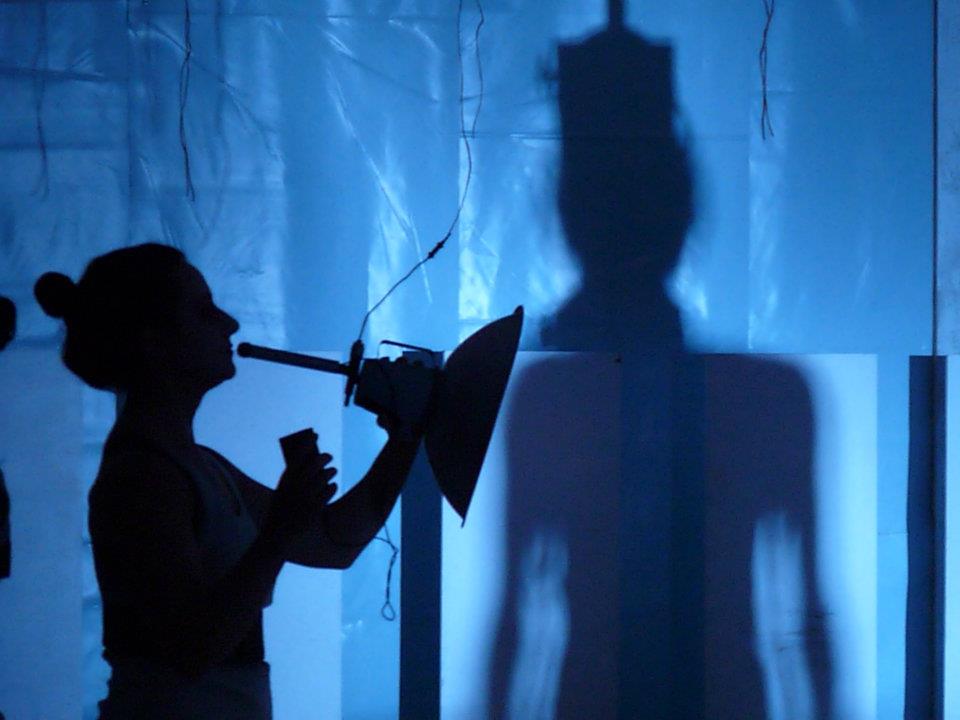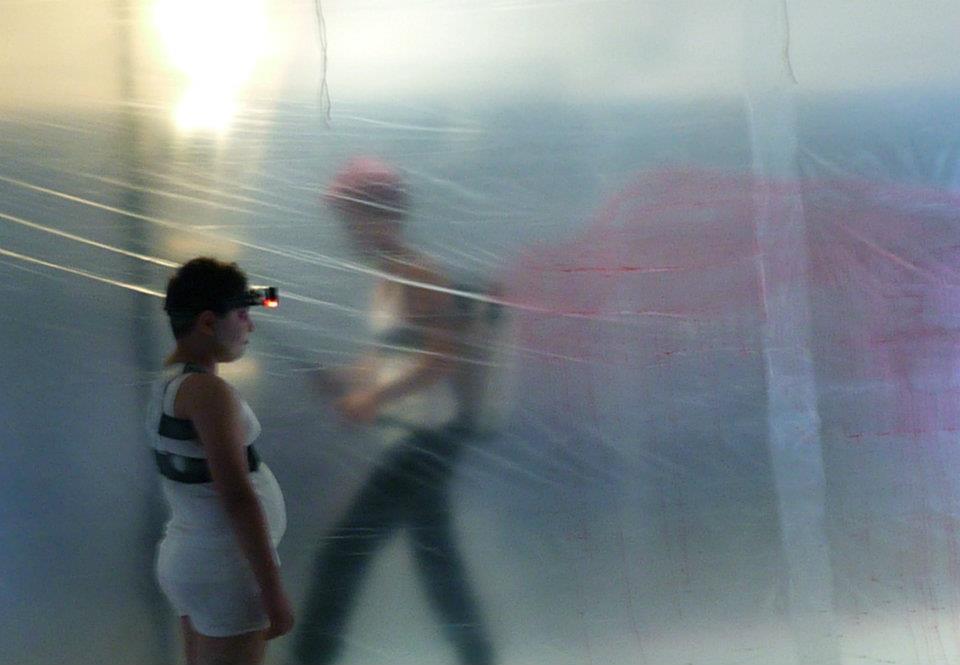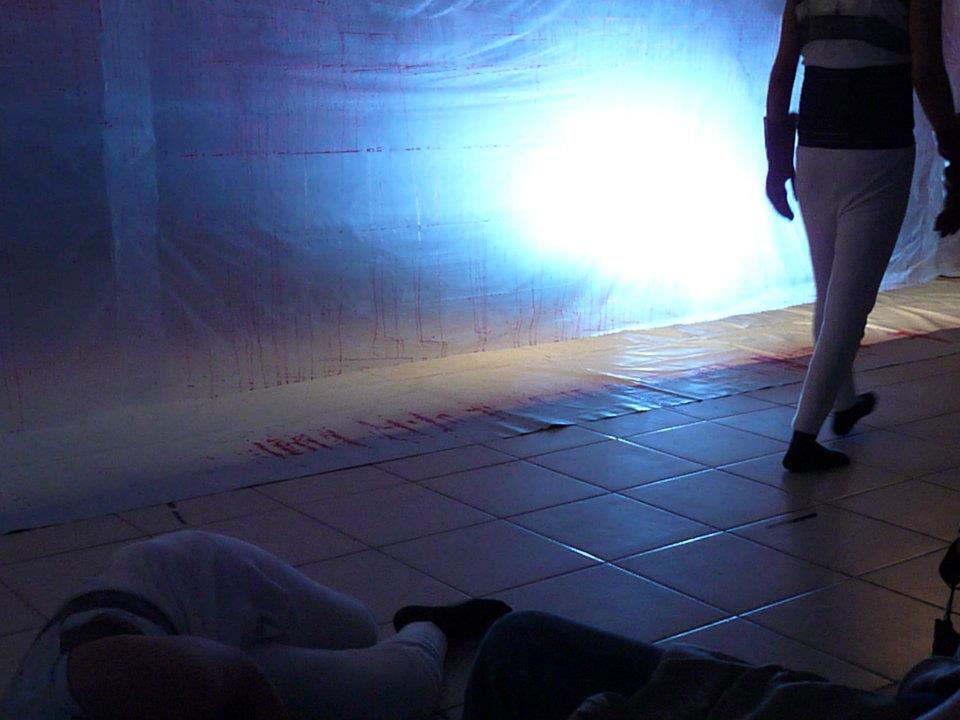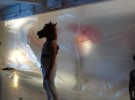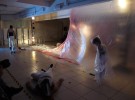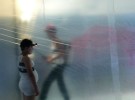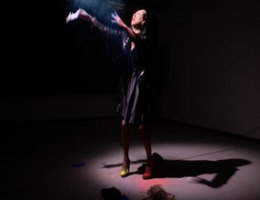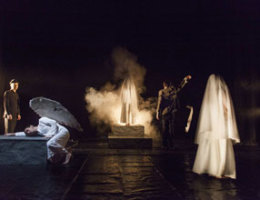
AZZURRA DE GREGORIO
VISUAL ARTIST AND THEATRE DIRECTOR
S.A.U.T.
THEATRE
- YEAR:
2012
- CONCEPT:
N. Macolino, Azzurra De Gregorio
- PHOTO:
A. Cicora
Produzione/Production: Abraxas Lab
Movimenti di scena e assistente alla regia/Set movements and director assistant: Azzurra De Gregorio
Regia/Directed by: Nicola Macolino
Con/With: gli allievi di Abraxas Lab/Abraxas Lab students
Cosa accade se la testa si apre e tutto ciò che in essa è contenuto fluisce liberamente e senza riserve?
Ne fuoriesce un pensiero strano ed improduttivo. Un pensiero che non ha direzioni, censure, intenzioni, significati, obiettivi. Un pensiero che il corpo rielabora e mette in forma. Un pensiero che diventa atto, immagine, gesto. O forse un non-pensiero…
E’ esattamente questo il percorso che ha guidato l’elaborazione di Strange and unproductive thinking, il secondo spettacolo prodotto da Abraxas Lab attraverso le visioni e le intuizioni degli allievi. Essi hanno infatti ascoltato un brano musicale di David Lynch (che è poi quello che ha dato il nome allo spettacolo) ed hanno trascritto su un foglio, senza alcun vincolo di spazio o di forma, tutto ciò che quel brano ha in essi suscitato. In una seconda fase, tutto questo materiale è stato combinato in un unico testo, eliminando qualsiasi distinzione tra i 10 autori che lo hanno composto. Alla fine, il testo è stato “messo in vita”, generando così una composizione dotata di un’autonomia formale ed estetica.
Mai come in questa occasione sarà lo spettatore stesso a creare il senso ultimo dello spettacolo, ad istituire inedite relazioni tra le azioni di cui è testimone, a scoprire la profondità dell’inconscio che lo ha generato, a sciogliere l’ambiguità che lo contraddistingue.
E questo perché l’intera opera è stata concepita nella convinzione che l’informazione in sé non ha significato, se non quello che le attribuisce il sistema con cui interagisce. Ciò comporta il fatto che sia l’esistenza della stessa informazione che la realtà oggettiva, possono essere messe «tra parentesi», per usare un’espressione del biologo/ filosofo Humberto Maturana.
Ma in fondo, al di là di qualsiasi tentativo di definizione, sono i corpi ad essere i protagonisti di questa tragedia: corpi che crollano e si rialzano, che pulsano all’unisono, che si trasformano e si deformano, che rompono l’ordine, non riuscendo ad inserirsi nella rigida geometria dei movimenti-tracciato che sono condannati a ripetere. 10 corpi, ovvero 10 vittime di un potere che, come avrebbe detto Foucault, non è sopra la società ma è dentro, si produce in ogni istante, in ogni momento di relazione tra un punto ed un altro. In questa tragedia si percepisce infatti un potere che impedisce la distinzione tra dominanti e dominati, poiché ciascun corpo tenta contemporaneamente sia di sottrarvisi, che di preservarlo.
Ciò che lo spettacolo cerca quindi di intercettare, seppur in maniera vaga ed indeterminata, è l’interstizio all’interno del quale si muovono pensieri strani ed improduttivi, gli stessi che, sistematicamente, sono aboliti dall’ordine del discorso tradizionale, non essendo costruiti secondo la logica che la ragione impone.
What happens if the head opens up and all what is contained in it flows freely and without reserves? A strange and unproductive thinking comes out of it. A thinking that has no directions, censorship, intentions, meanings, objectives. A thinking that the body re-elaborates and puts in shape. A thinking that becomes act, image, gesture. Or maybe non-thinking..
This is exactly the itinerary that guided the elaboration of Strange and Unproductive Thinking, the second work produced by Abraxas Lab trough the student’s visions and intuitions. The students listened in fact to a David Lynch song (the one from which the name of the work comes from) and they wrote on a piece of paper, without any space or shape restriction, all that this song evoked in their minds. In a second phase, all this material was combined in a unique text and any distinction between the 10 authors was eliminated.
In the end, a “life” was given to the text, generating in this way a composition with a formal and aesthetic autonomy.
In this way the spectator becomes the real creator of the show meaning, he/she creates original relations between the actions visible on stage, he/she discovers the depth of the unconscious who generated it and he/she dissolves the ambiguity that characterizes it.
Because the whole work was conceived with the certainty that the information has no meaning, except the one that the system in which it interacts attributes to it. This implicates the fact that both the existence of the information and the objective reality can be putted “in brackets”, to use an expression of the biologist and philosopher Humberto Maturana.
But at the bottom, beyond every attempt of definition, the bodies are the real protagonist of this tragedy: bodies that fall down and raise up again, that break the order, as they are not able to integrate into the rigid geometry of the movements-tracks they are condemned to repeat. 10 bodies, or rather 10 victims of a power that, as Foucault would say, is not over the society but within the society, a power that is produced in every instant, in every moment of relation between the points that form it. In this tragedy is in fact possible to perceive a power that impedes the distinction between dominants and dominated, because every body tries to avoid and to preserve it at the same time.
What the work tries to intercept is therefore, even if in a vague and indeterminate way, the interstice where strange and unproductive thinking move, the same thinking that is systematically abolished by the traditional order of the discourse, as it is not built according to the logic that the reason impose.
Azzurra De Gregorio ©, All Rights Reserved - Website by NoMaker, Inc.
